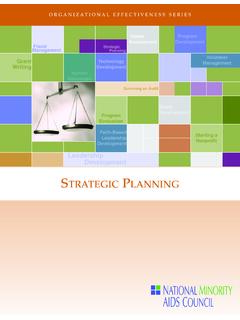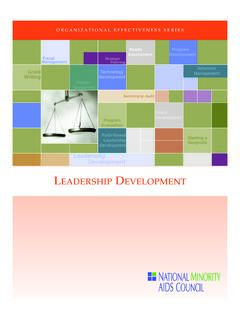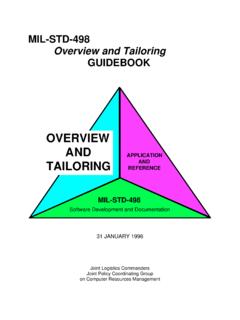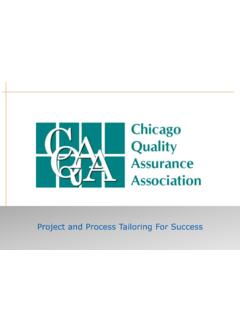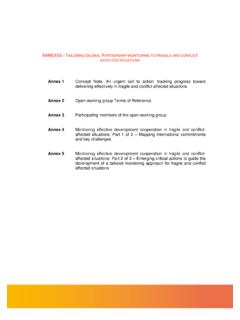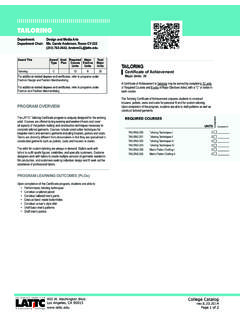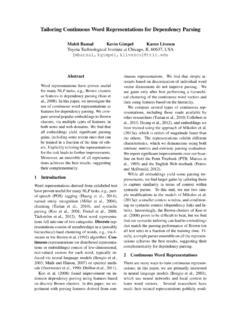Transcription of Tailoring Approaches for Effectively Serving Communities ...
1 Expanding accEss to BiomEdical HiV prEVEntion: Tailoring Approaches for EffectivelyServing Communities of ColorLeading with Raceapril2018 Thank you and acknowledgement to our reviewers Nala ToussaintDr. Latesha ElopreVan BaileyLeisha McKinley-BeachDr. Leandro A MenaDr. Bambi GaddistPedro CarneiroEdwin Corbin-GutierrezMing Ming KwanDr. Anthony Mills Megan Cannon Gabriel MaldonadoGina BrownPedro Alonso SerranoExEcUtiVE sUmmarYExpAnding ACCESS To BiomEdiCAl HiV prEVEnTion | 1 Scientific advances have made possible the development of clinical interventions that significantly lower the transmission of the HIV virus. These interventions, better known as biomedical HIV prevention, consist of powerful methods that reduce HIV transmission, moving us along a path to ending the HIV epidemic.
2 There are three primary biomedical HIV prevention tools so far: Treatment as Prevention (TasP), Pre-Exposure Prophylaxis (PrEP), and Post-Exposure Prophylaxis (PEP). This brief will only focus on TasP and report is the second installment of a two-part report: Blueprint for HIV Biomedical Prevention. More than 20 interviews were conducted with a diversity of stakeholders in the summer of 2016 to inform the first part, the State of the State Report. For the second installment those interviews were used as the starting point for distilling a focused list of recommendations for Expanding Access to Biomedical HIV Prevention in Communities of color. While the first part presented the state of the state of biomedical HIV prevention in the context of our limited health care systems, the second intends to be more granular, providing recommendations to expand access in Communities of color and, more specifically, offer recommendations for individual Communities or these scientific advances, all of our gains have not been realized equally.
3 Communities of color have not fully experienced the significant benefits of the new prevention tools. Great educational efforts have occurred to raise awareness and knowledge among the populations that could benefit the most. Clearly, education only is not enough. Transgender women of color and Black and Latino Gay men are still falling behind in the uptake of PrEP compared with White MSM. Communities of color have not fully experienced the significant benefits of the new prevention sUmmarYExpAnding ACCESS To BiomEdiCAl HiV prEVEnTion | 2In order to scale up access to biomedical HIV prevention, critical roles and actions by community-based organizations, health care providers, and the broader health system are necessary.
4 This is an essential base upon which to build tailored initiatives to meet specific needs of individual Communities or subpopulations. Biomedical HIV prevention creates new opportunities to reduce the alarming HIV health inequities that exist across the country. But simply expanding access to treatment and prevention services without understanding the unique needs, values, and barriers to care of specific groups will cause us to expand rather than shrink these alarming disparities. In seeing the uptake, evolution, and expansion of biomedical interventions, several trends have emerged and important lessons have been learned. This report features some key cross-cultural findings that can speak to universal truths and address needs of all Communities and important background that can help to develop initiatives that are more effective at meeting the needs of specific Communities of color.
5 This report is the compilation of the intelligence and experience of front line strategists Serving Communities of color in this still evolving field of biomedical HIV prevention. Ending AIDS must be more than a slogan; it takes planning, collaboration, and funding to make it real. Over the past five years, significant gains have been made in our efforts to end the HIV epidemic. Powerful new tools have helped us reach these new heights. Despite these successes, all of our gains have not been realized equally. Communities of color have not been able to fully experience the significant gains that are possible with our new tools. In an effort to spur innovation and growth, we prepared this document that features some guided thoughts and principles for working through how to close racial/ethnic inequities in HIV prevention and treatment.
6 Biomedical HIV prevention consists of powerful tools that can reduce HIV transmission and move us along a path to ending the HIV epidemic. There are three primary biomedical HIV prevention tools: Treatment as prevention (TasP) involves providing antiretroviral therapy (ART) to people living with HIV. Extensive research has proven how effective ART is at keeping people living with HIV healthy, and the best outcomes come from diagnosing people as soon as possible after they become infected and then immediately initiating ART. The prevention benefit of ART is that virally suppressed people with HIV do not transmit the virus to others. People who achieve and maintain viral suppression are called undetectable.
7 The Undetectable=Untransmittable (U=U) campaign is rooted in the concept of treatment as prevention. Pre-exposure prophylaxis (PrEP) involves HIV negative individuals taking a daily pill containing two antiretrovirals to prevent becoming infected with HIV. First introduced within the last decade, PrEP remains a new intervention that is both safe and highly effective for preventing HIV infection. Post-exposure prophylaxis (PEP) involves giving people with a very recent exposure or potential exposure to HIV a short course of ART (usually about a month), which can prevent HIV acquisition if treatment is started soon after the exposure. This brief will focus primarily on two of these tools that have the most significant promise thus far: TasP and PrEP.
8 While critically important, the role of PEP is more limited as a prevention strategy. As it relates to PEP, it is essential that: (1) providers know about PEP; (2) providers know how to prescribe it; (3) community members know that PEP exists; (4) community members know that they introdUctionExpAnding ACCESS To BiomEdiCAl HiV prEVEnTion | 3introdUctionExpAnding ACCESS To BiomEdiCAl HiV prEVEnTion | 4need to start PEP soon after an exposure; and (5) the health system provides multiple community and emergency room access points for PEP, as well as supports the ability to quickly address payment barriers so that persons in need (whether or not they are insured) are not denied timely access to the intervention.
9 For a more detailed discussion of issues around biomedical HIV prevention, see the Blueprint for HIV Biomedical Prevention: State of the State report is the second part of a two-part report: Blueprint for HIV Biomedical We conducted more than twenty interviews with a diversity of stakeholders in the summer of 2016 to inform the first part, the State of the State Report, and used those interviews as the starting point for distilling a focused list of recommendations for expanding access to biomedical HIV prevention in Communities of color. The recommendations were also informed by discussions that took place at two conferences hosted by NMAC: the National HIV PrEP Summit in December 2016 and the National Biomedical HIV Prevention Summit in December 2017.
10 NMAC staff and a cadre of external reviewers reviewed an initial draft of the report to comment on the priority of the recommendations, propose additional issues for consideration, and provide any other feedback that could benefit the development of the report. This brief will focus primarily on two of these tools that have the most significant promise thus far: TasP and PrEP. rEcommEndations For Communities oF colorExpAnding ACCESS To BiomEdiCAl HiV prEVEnTion | 5As discussed in the State of the State Report, in order to scale up access to biomedical HIV prevention, critical roles and actions by community-based organizations, health care providers, and the broader health system are necessary.
